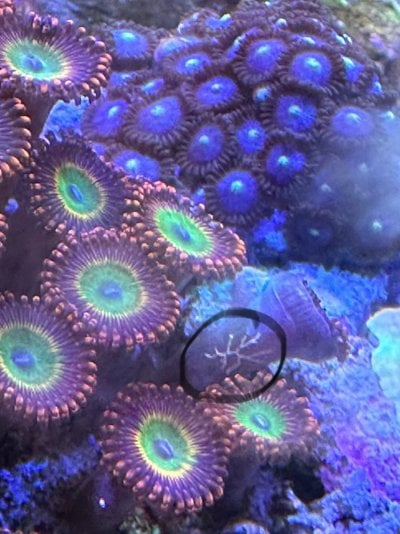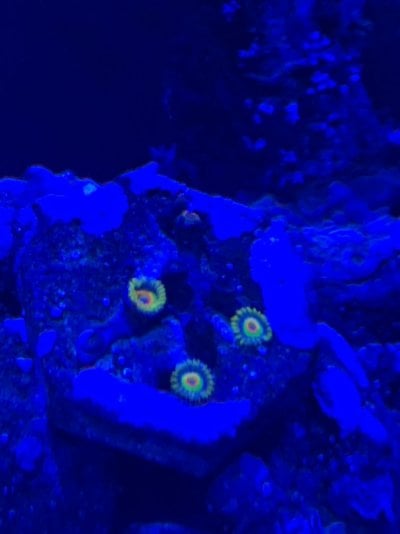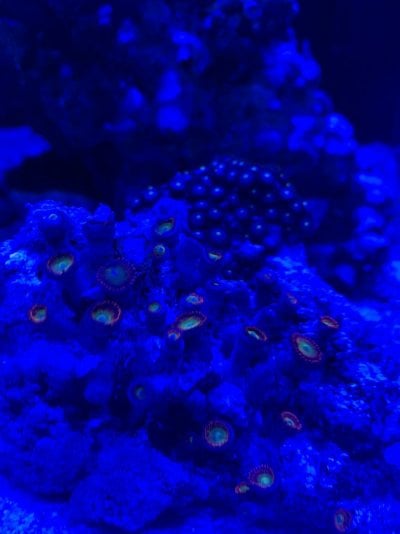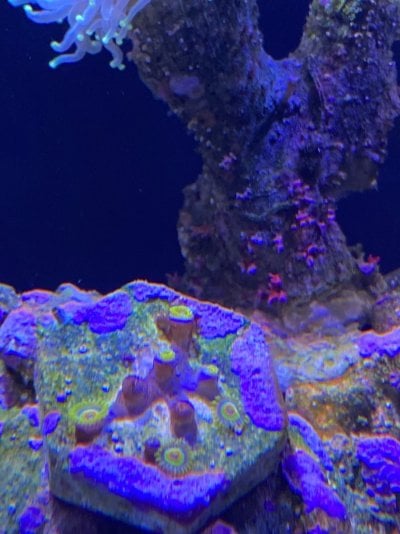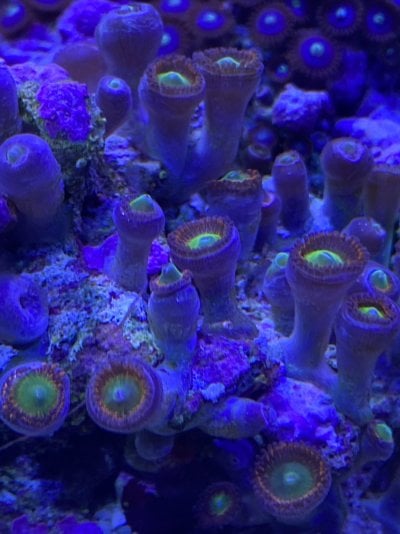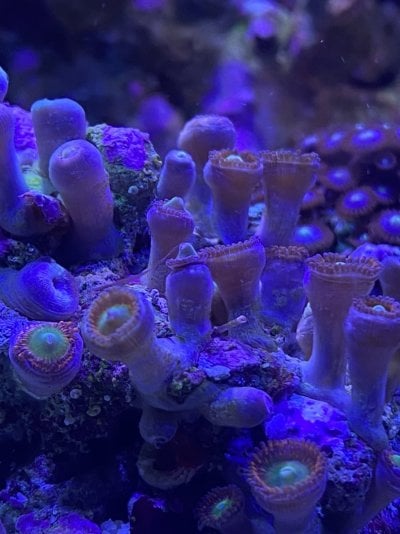Navigation
Install the app
How to install the app on iOS
Follow along with the video below to see how to install our site as a web app on your home screen.
Note: This feature may not be available in some browsers.
More options
You are using an out of date browser. It may not display this or other websites correctly.
You should upgrade or use an alternative browser.
You should upgrade or use an alternative browser.
Is this a pest?
- Thread starter SethIstanbul
- Start date
- Tagged users None
My first thought would be a sponge, but I can't say for sure. The fact that only the polyp it's on is closed would make me nervous with it though.
I'd personally probably watch it for like three days and see if the polyp opens back up, if the thing spreads, if other polyps start closing, etc. and gauge if the thing seems harmful or not from that.
I'd personally probably watch it for like three days and see if the polyp opens back up, if the thing spreads, if other polyps start closing, etc. and gauge if the thing seems harmful or not from that.
My first thought would be a sponge, but I can't say for sure. The fact that only the polyp it's on is closed would make me nervous with it though.
I'd personally probably watch it for like three days and see if the polyp opens back up, if the thing spreads, if other polyps start closing, etc. and gauge if the thing seems harmful or not from that.
Can you get some white light pics of it now? Are the zoas it's growing on/toward closing up when they didn't used to before?Unfortuntelly it spread to other polyps too. Even the other zoas. Do you think it is sponge? How can i treat with it?
For getting rid of it, it's a bit trickier with it growing on the zoas, but the suggestions below may help (sorry, it's a lot and kind of disorganized):
For removal:
I've heard of some good removal success rates with the injection method (described below), but that may be risky with the sponge being on the zoas.
The best way I've heard to control sponge growth at this point is to use a steel straw to scrape and siphon out the sponge you want to remove. Sometimes you can create bad conditions for them and kill them off that way, but that's typically much harder and not always effective.
Some other sponge removal methods:
Other suggestions include exposing the sponge to air (obviously not a guaranteed solution, and definitely not viable for this situation); hydrogen peroxide dipping the sponge (again, not viable here); injecting the sponge with hydrogen peroxide, vinegar, boiling water, or air; microbubbles in the display; and a few more. Predation is not usually a good solution for this issue
Basically, if the sponges have enough food and enough trace elements (which for most sponges includes silicates) to meet their needs, then you’ll see their populations booming.
If you can figure out what’s allowing them to thrive in your tank, then you can deal with that root cause and get rid of them.
Also, with regards to zoas and palys in case this is an issue for your tank:Some people may suggest scrubbing with a soft toothbrush to try and avoid irritating the zoas.
Yeah, if you do scrub it off in a bowl of tank water, since it's growing on palys, you may want to run carbon in the bowl to absorb any toxins.
Any scrubbing with zoas/palys should be done in a very well ventilated area, and you should be aware of the symptoms of palytoxin poisoning just to be safe:
To add, some sponges have incredible regenerative capabilities, so multiple removals may be necessary, and doing what you can to minimize the odds of remaining sponge cells ending up back in your tank is recommended:Palytoxin Poisoning: Marine Aquarium Safety | SA Health
Palytoxin poisoning: Zoanthid coral species can contain Palytoxin and cause dangerous symptoms if not handled carefully. Protect your family with these aquarium tips.www.sahealth.sa.gov.au
I would try the scraping with a steel straw/brushing with a toothbrush and siphoning out for that one in particular - if you can do this is a bowl of saltwater out of the tank (I don't recommend adding the water to the tank after) and rinse with clean saltwater (not from the bowl) afterwards, that would be even better.
I should clarify here - the scraping and siphoning method I refer to literally siphons through the straw as you scrape to try and prevent spreading (this is also why I recommend doing this in a bowl outside of the tank).
Here are some more pictures, maybe these would help to clarifyCan you get some white light pics of it now? Are the zoas it's growing on/toward closing up when they didn't used to before?
For getting rid of it, it's a bit trickier with it growing on the zoas, but the suggestions below may help (sorry, it's a lot and kind of disorganized):
Attachments
Any chance you can get brighter, whiter light still?Here are some more pictures, maybe these would help to clarify
From what I can tell, this is looking different than the stuff in the first pic. Corals aren't my strong point yet, but I'm hoping to be able to rule out zoa pox.
Similar threads
- Replies
- 5
- Views
- 123



